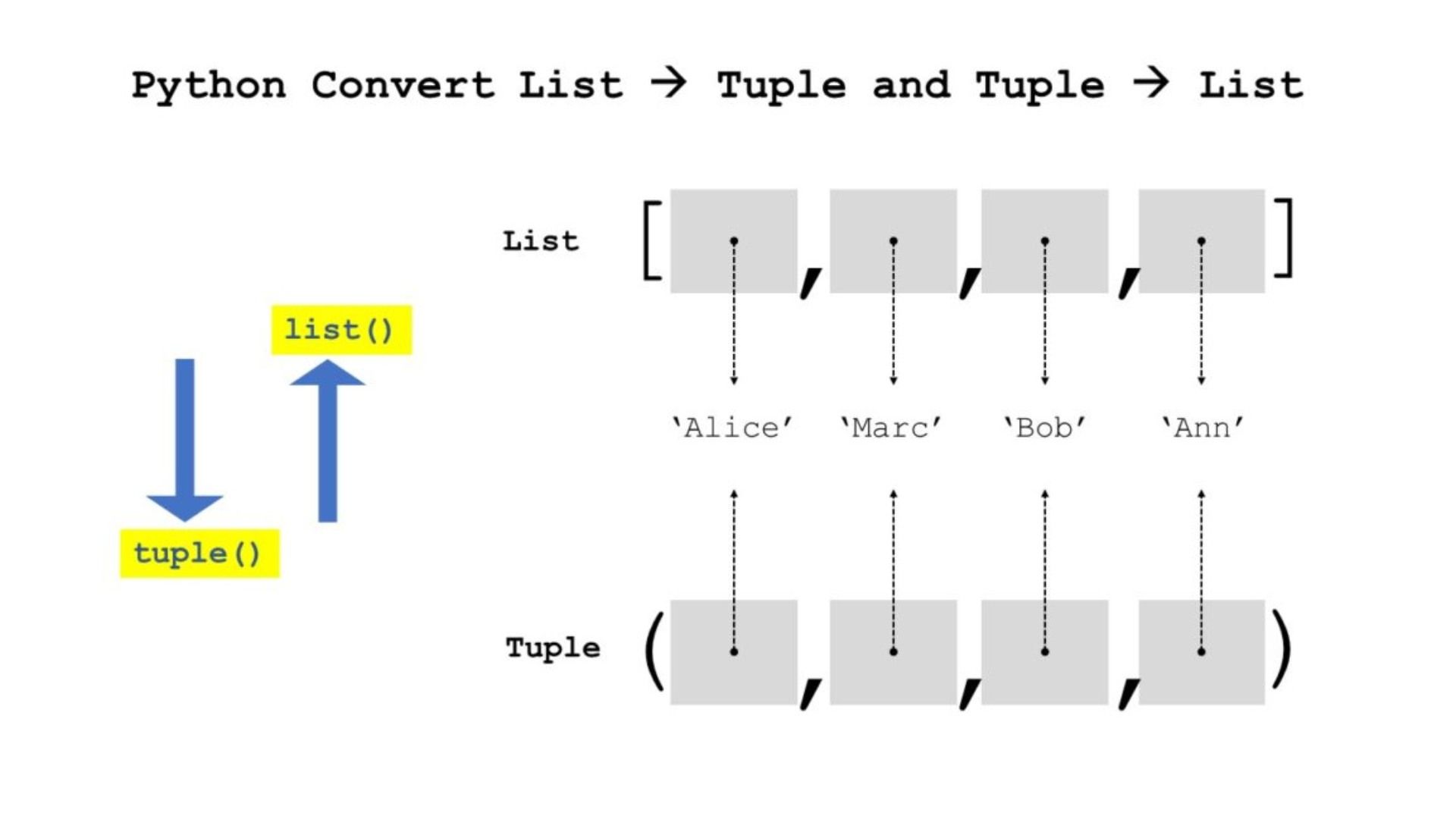Learn Different Methods to convert a List into a Tuple in Python

Python is a flexible language that provides a great number of approaches to changing data structures. Lists and tuples are two of the most used data types for storing collections of items in Python. A list is mutable and a tuple is not but both are easy to understand.
Sometimes, especially when working with a particular program, one may be expected to transform a Python list to tuple. This blog will outline several ways of accomplishing this so that you will have the means to deal with this effectively. Not only will you be able to learn about converting Python list to tuple in this article, but you will also learn when to do so and why this is useful.
Let’s dive in!
Why Convert a Python List to Tuple?
Before we delve into the methods, let’s understand the reasons for converting a list to a tuple:
- Immutability: Tuples do not allow items to be updated, modified, or removed, therefore Tuples are safer when one wants the data to remain constant throughout the program.
- Hashability: Tuples can be used as dictionary keys or elements in sets because they’re immutable, meaning they can’t be changed. Lists, on the other hand, are mutable and can’t be used in these cases. However, you can convert a list into a tuple if you need a hashable version.
- Performance: Tuples are a little faster than lists, the reason being that tuples are immutable. This can easily make a difference, especially in the performance-critical applications.
- Readability: Using a tuple in your program, while reading it may indicate that the data structure is immutable and hence enhances the overall code readability.
Methods to Convert a Python List to Tuple
1. Using the tuple() Constructor
The simplest way of converting a list into a tuple is by calling the Python inbuilt function, which is tuple(). This method also has the strong advantages of efficiency and simplicity of application.
# python list to tuple: Using tuple() function
my_list = [1, 2, 3, 4, 5]
my_tuple = tuple(my_list)
print("List:", my_list)
print("Tuple:", my_tuple)Output:
List: [1, 2, 3, 4, 5]
Tuple: (1, 2, 3, 4, 5)This method works with lists of any size or type.
2. Using a Generator Expression
When operating on a large list and then transforming the result into a tuple a generator expression can be a memory-saving solution. This approach is quite different from the previous one since it does not create an intermediate object:
# python list to tuple: Using a generator expression
my_list = [10, 20, 30, 40]
my_tuple = tuple(x for x in my_list)
print("List:", my_list)
print("Tuple:", my_tuple)Output:
List: [10, 20, 30, 40]
Tuple: (10, 20, 30, 40)3. Using Unpacking Operator *
Unpacking Operator * is also used in the conversion of a list to a tuple, This method is pretty compact and uses the unpacking nature of Python.
# python list to tuple: Using the unpacking operator
my_list = [100, 200, 300]
my_tuple = (*my_list,)
print("List:", my_list)
print("Tuple:", my_tuple)Output:
List: [100, 200, 300]
Tuple: (100, 200, 300)Here the comma after the unpacking operator makes certain that the result of is'll be a tuple, not a single element.
4. Using List Comprehension (Indirect Conversion)
Even as it is not the direct way, it is possible to create a tuple by means of list comprehension. This is useful if you want to perform some extra operations in the course of the conversion.
# python list to tuple: Using list comprehension
my_list = [1, 2, 3, 4, 5]
my_tuple = tuple([x for x in my_list])
print("List:", my_list)
print("Tuple:", my_tuple)Output:
List: [1, 2, 3, 4, 5]
Tuple: (1, 2, 3, 4, 5)Though one may find this a little repetitive, it makes it possible to either filter or transform the elements before converting them.
5. Using the map() Function
If you wish to modify the elements within the list then you can go for the map() function. It takes a function as an argument and applies this function to every item in the input list and returns the result in a tuple.
# python list to tuple: Using map()
my_list = [1, 2, 3, 4]
my_tuple = tuple(map(lambda x: x * 2, my_list))
print("List:", my_list)
print("Tuple:", my_tuple)Output:
List: [1, 2, 3, 4]
Tuple: (2, 4, 6, 8)This method is also useful when one has to make some changes to the elements of the list translated by means of this method.
6. Using a For Loop
A rudimentary but efficient way is to generate a tuple in the simplest manner using a for-loop construct of the language.
# python list to tuple: Using a for loop
my_list = ['a', 'b', 'c']
my_tuple = ()
for item in my_list:
my_tuple += (item,)
print("List:", my_list)
print("Tuple:", my_tuple)Output:
List: ['a', 'b', 'c']
Tuple: ('a', 'b', 'c')This however is much slower than the previous methods but it is straightforward and shows how tuples are unchangeable.
When to Use Each Method
- tuple() constructor: Use this for simple sentences where you want your text’s ‘style’ to be clear and not distracting.
- Generator expressions: Best used when working with large datasets in order to consume less memory.
- Unpacking operator: Great for short and more recent Python code.
- map() function: Able to be employed while converting the elements.
- For loop: This one is for educational purposes, small dataset but is not recommended for large data sets because it is not efficient.
Conclusion
This basic and perhaps trivial, but nonetheless fundamental, task of transmuting a Python list to tuple is one of the most basic instructive evidence of Python’s overall data structure potential. In all contexts, whether you’re looking for performance solutions or solidifying data, the methods prescribed in this blog offer sound solutions to your programming problems.